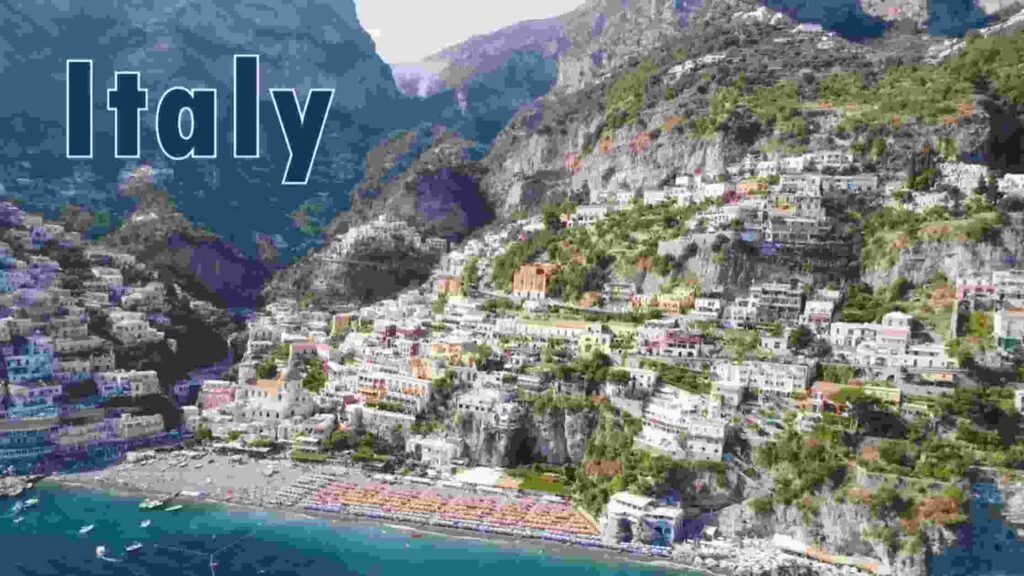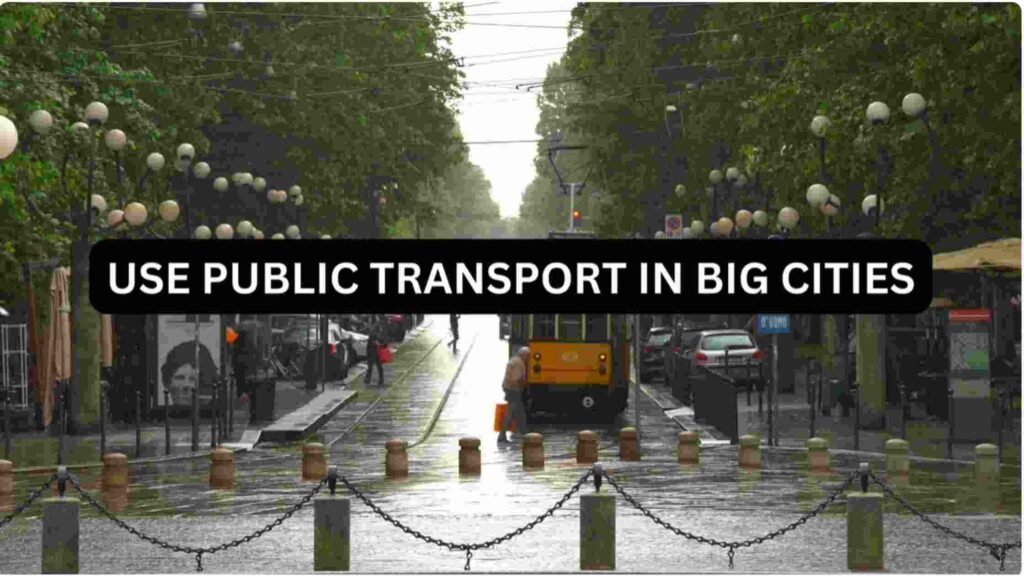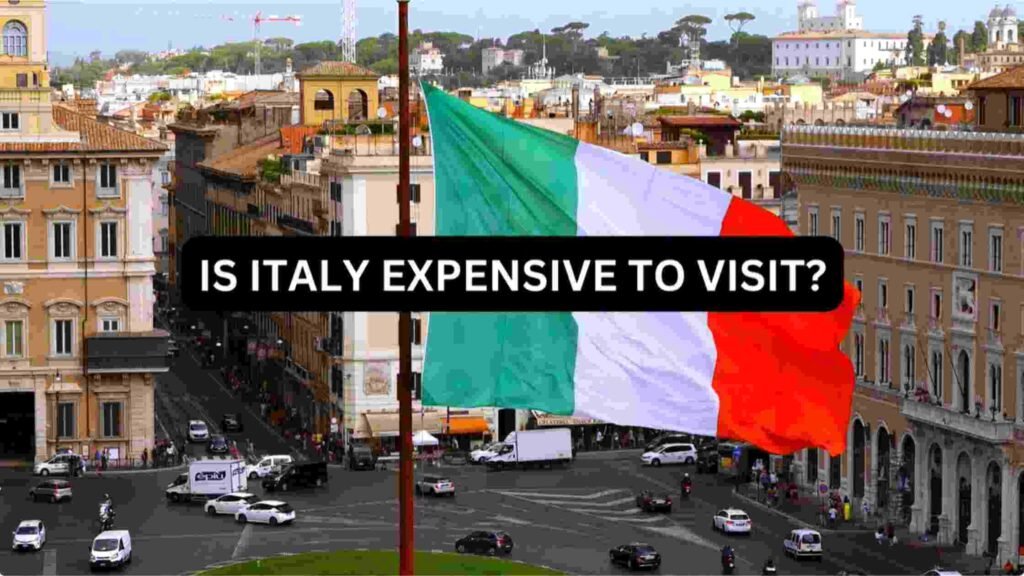The cost to Travel to Italy can be between $1,500 to $4,000 per person for a 10-day trip. Costs vary widely depending on travel style, accommodation choice, and activities.
Italy beckons travelers with its rich cultural heritage, stunning landscapes, and world-renowned cuisine. As an iconic European destination, it offers a range of experiences from Rome’s historical grandeur to the Amalfi Coast’s scenic beauty.
Budgeting for an Italian vacation involves considering several factors including airfare, accommodations, transportation within the country, food, sightseeing, and entertainment.
Whether you indulge in luxury or opt for more modest lodgings, Italy provides options to suit various budgets. To ensure a trip that’s both memorable and affordable, planning and researching travel costs is essential. Customizing your journey to your financial comfort zone allows you to immerse yourself in Italy’s charm without breaking the bank.
Introduction To Italian Adventures

Welcome to the enchanting world of Italian adventures! Dreaming of wistful canals in Venice, the historic allure of Rome, or the artful heart of Florence is now a pursuit within reach. In this primer, we start on a spirited journey to unveil what it costs to travel to Italy.
Why Italy Captures The Traveler’s Heart
Italy, a land of rich history, tantalizing cuisine, and breathtaking landscapes, holds a magnetic charm. The country’s essence lies in its ability to blend ancient splendors with modern-day vibrancy.
- Marvel at the Colosseum, a testament to ancient Rome’s prowess.
- Savor world-famous pizza and pasta, woven into the fabric of Italian culture.
- Bask in the serene beauty of the Amalfi Coast, a slice of paradise on earth.
Scope Of The Article
This article is your compass to navigate the financial aspects of an Italian sojourn. We cover various expenses:
- Accommodation options, from hostels to luxury hotels.
- Transport methods within the city and across the country.
- Dining choices, whether you prefer street food or upscale restaurants.
- Entrance fees for must-see attractions and landmarks.
Read on to shape your dream Italian getaway into a vivid reality.
Travel Costs Breakdown
Starting on an Italian journey sparks dreams of romance, history, and world-class cuisine. Yet, the crucial question remains: What will it cost? Let’s Simplify the expenses, from soaring skies to cozy beds.
Flight Expenses
Your adventure begins with flights. Prices rise during peak summer months. Flexibility and early booking save you money. From the U.S., round-trip fares commonly range from about $350 to $1,400 depending on season and routing; peak summer months can push typical fares above $1,200. (Use flight alerts and flexible dates to find the best deals.)
- Economy deals often pop up off-season.
- Flight aggregators and alerts keep you informed on deals.
Flying directly to Rome or Milan might be pricier. Consider smaller cities for better rates. Mix and match airlines for added savings.
Accommodation Choices

From luxury to budget-friendly, Italy’s accommodations suit all wallets. Prices range widely, from $25 in a hostel to $300+ at a high-end hotel per night.
| Type of Accommodation | Cost per Night |
|---|---|
| Hostels | $25-$50 |
| Budget Hotels | $50-$120 |
| Luxury Hotels | $200-$300+ |
| Airbnbs | $60-$250 |
The area influences price. Major cities and tourist spots demand higher rates. The countryside offers peace at a lower price. Staying longer? Apartments or Airbnbs could reduce your budget.
Off-season travel benefits your wallet. Prices drop, allowing for better stays. Another tip is sharing costs. Groups or families should consider rental homes for joint savings.
Transportation Inside Italy
Exploring Italy’s transportation options is essential for budget-savvy travelers. Costs can vary widely, from economical train tickets to pricier domestic flights, impacting overall travel expenses.
Exploring Italy offers a blend of historical marvels, cultural flair, and scenic routes. To roam the Italian landscape, travelers must consider transportation modes that are both convenient and cost-effective.
Understanding the breadth of transit options can help budget your trip appropriately, whether you’re hopping from city to city or exploring one locale in-depth.
Public Versus Private Transport

The choice between public and private transport can greatly affect your travel expenses in Italy. Here’s what you should know:
- Public Transport: Efficient and economical, Italy’s public transportation covers trains, buses, and metros.
- Trains connect major cities and towns, with the Trenitalia and Italo services offering various speed options.
- Local buses cater to shorter distances within regions, complementing train routes.
- Metros serves the bustling cities of Milan, Rome, and Naples, ideal for city travel.
- Private Transport: Renting a car or hiring private vehicles provides complete freedom but comes at a higher price.
- Rental costs vary by vehicle type and rental period.
- Additional expenses include fuel, tolls, and potential ZTL area fines.
Consider convenience, comfort, and cost when deciding on public versus private transport. Public transport lessens your carbon footprint and spares you from parking woes. Private vehicles offer tailored travel at a premium.
Navigating Italian Cities
City travel in Italy demands savvy navigation to enjoy each destination fully. Here’s a snapshot of how to traverse Italian cities:
- Ticketing: Purchase tickets at stations, kiosks, or through apps. Always validate tickets to avoid fines.
- City Passes: Invest in city passes like the Roma Pass for bundled transport and attraction access.
- Know ZTLs: Many cities have Restricted Traffic Zones (ZTLs) to limit traffic in historic centers.
Scooters and bikes offer nimble transportation on narrow streets. Major cities embrace bike-sharing schemes for eco-friendly short trips. Downloading local transit apps can streamline travel plans and provide real-time updates. Embrace the Italian pace and select the right transport to enhance your adventure.
Dining And Cuisine Budgeting
Italy tempts travelers with its rich culinary landscape. Setting a dining budget proves crucial. This section explores costs tied to eating out and shopping at local markets while covering diverse ways to savor Italian flavors without overspending.
Eating Out In Italy
Eating out in Italy varies greatly by location. Prices differ between bustling cities and quiet towns. Budget-friendly options like ‘trattorias’ and pizzerias offer a chance to taste authentic dishes at lower costs. Mid-range restaurants typically charge from 15 to 30 euros for a meal. Upscale dining can exceed 50 euros per person.
Consider the following to manage dining costs:
- Opt for a fixed-price menu, known as a ‘menu fisso’.
- Drink tap water instead of bottled water to save money.
- Visit eateries outside popular tourist spots for better prices.
- Skip the second course if looking to spend less.
A typical dining budget per day could look like this:
| Meal | Budget Option | Mid-Range Option | Luxury Option |
|---|---|---|---|
| Breakfast | 3-5 euros | 6-10 euros | Over 10 euros |
| Lunch | 5-10 euros | 10-20 euros | 20-50 euros |
| Dinner | 10-20 euros | 20-40 euros | Over 50 euros |
Sample Local Markets
Local markets are treasure troves for food lovers. They provide cost-effective and fresh alternatives to restaurants. Experience the vibrant atmosphere and fresh products. Markets like the Mercato Centrale in Florence are perfect for assembling a delicious picnic for under 10 euros.
- Buy locally-produced cheese, cured meats, and bread.
- Sample fruits and vegetables in season for the best value.
- Interact with vendors for insights into Italian food culture.
To extend dining funds, consider these market-based meals:
- Packed sandwiches with fresh ingredients.
- Seasonal salads topped with local cheese.
- Ready-to-eat seafood for a taste of coastal regions.
Sightseeing And Attractions
Italy’s sights and attractions are a feast for the eyes. Yet, they can also eat up a travel budget. Knowing costs ahead helps plan adventures. Let’s explore museum passes, tour fees, and free attractions.
Museum Passes And Tour Fees
Italy’s museums and tours range in price. A single ticket can cost from €5 to over €25. Here’s how to save:
- Cities offer passes combining several sites.
- These passes save money and time.
- Passes often skip lines at busy attractions.
- Check online for pass options and prices.
| City Pass | Includes | Price Range |
|---|---|---|
| Rome Pass | Museums, Attractions, Transport | €36–€63 depending on duration/vendor (check official site) |
| Florence Card | Museums, Buses | €85 (official price) |
| Venice | Access and museum options | Access-fee trial ended July 28, 2025; museum/transport passes vary ~€21–€59 |
Free Attractions To Enjoy
Italy also offers many free attractions. These spots add value to travel without the cost.
- Rome’s Pantheon—a historic temple.
- Venice’s St. Mark’s Square—a bustling plaza.
- Florence’s Piazzale Michelangelo—best city views.
- Many churches—no fee to enter and explore.
Walking city streets is free. Italy’s charm often hides in unexpected corners.
Shopping And Souvenirs
Italy is a treasure trove of memories waiting to be taken home. Each purchase tells a story of Italian craftsmanship, from high-end fashion to handcrafted local goods. Souvenirs offer a way to bring a piece of your travels back with you, but it’s important to budget accordingly.
Knowing the cost can help travelers allocate funds for those special items that catch their eye. Let’s explore the best shopping avenues in Italy and find treasures that don’t break the bank.
Local Crafts And Fashion
Italy’s rich history in art and design comes alive through its local crafts and fashion. In cities like Florence and Venice, traditional workshops showcase handmade leather goods and intricate glasswork. But these items come with a price tag reflective of their quality and heritage.
For fashion enthusiasts, Milan is a paradise, offering the latest from top Italian designers. Prices vary widely but expect to invest in these luxury goods.
- Handcrafted leather bags: €100 – €500
- Murano glass jewelry: €20 – €150
- Designer clothing: €200 – €2000+
Budget-friendly Keepsakes
You don’t need to spend a fortune to bring home a piece of Italy. Many affordable souvenirs are available if you know where to look. Consider markets and street vendors for the best deals.
| Item | Expected Cost |
|---|---|
| Keychains | €1 – €5 |
| Postcards | €1 – €2 |
| Magnets | €2 – €5 |
Also, consider edible gifts like locally-made pasta or olive oil, which are both delicious and easy on the wallet.
Seasonal Price Variations
Traveling to Italy offers unique charms each season. Prices change with the time of year.
Understanding seasonal cost differences is key to planning.
Peak Season Vs Offseason
Italy’s peak tourist season spans from June to August. Costs rise during these months. Visitors flock to iconic sites. Beaches and cities bustle with life.
The offseason spans from November to March. Prices drop significantly. Tourists can enjoy quieter moments. Italy’s charm remains but with fewer crowds and lower expense.
| Season | Average Hotel Price | Average Flight Price |
|---|---|---|
| Peak (Summer) | High | High |
| Offpeak (Winter) | Low | Low |
- Accommodation pricing often increases substantially during the summer (sometimes doubling in popular places).
- Flight costs can be 50% higher in peak months for many routes.
Catching Festivals And Events
Italy’s festivals bring seasonal pricing quirks. Big events like Venice’s Carnevale push up winter prices. Easter celebrations have a similar impact in spring. Planning around these events can save money. Know the local calendar. Book accommodations and transport early.
- Festivals may increase prices in specific areas.
- Early booking helps snag deals even in high-demand periods.
- Travel insurance can cover event cancellations.
- Check event dates online.
- Compare prices across multiple sites.
- Lock in rates well in advance.
Tips For Saving Money
Starting on an Italian Adventure can be pricey, but savvy planning makes a big difference in your budget. Below, find effective ways to trim costs while still indulging in la dolce vita.
Travel Discounts And Deals
Snagging travel discounts is like finding hidden treasure. Follow these steps:
- Book in advance – Airfares and train tickets are cheaper.
- Travel off-peak – Prices drop during non-holiday periods.
- Compare – Use travel comparison sites for the best deals.
- Newsletters – Sign up and receive exclusive offers.
- City passes – Get discounts on attractions and transport.
- Last-minute – Sometimes last-minute bookings offer great savings.
Remember to check for age-based discounts or group rates if traveling with friends.
Alternative Accommodations
Where you stay heavily impacts your spending. Consider these options:
- Hostels – Wallet-friendly and social.
- Apartment rentals – Live like a local and cook meals.
- Agriturismo – Stay on a farm and enjoy fresh produce.
- Monastery stays – Unique and economical.
- Camping – Connect with nature and save.
Always compare your accommodation options using reliable booking sites. Choose places with free breakfast or kitchen facilities to cut food expenses.
Sample Budgets For Diverse Travelers
A trip to Italy beams with the promise of breathtaking sights, delicious cuisine, and rich history. The cost can vary widely depending on travel style. From the rolling vineyards of Tuscany to the historic streets of Rome, Italy offers experiences for all.
Craft a budget to match your dream Italian getaway. Exploring on a shoestring or indulging in luxury, find out how much to set aside with these sample budgets.
The Budget Backpacker
Thrifty travelers can enjoy Italy’s charms without breaking the bank. Consider these budget-friendly options:
- Accommodation: Hostels or budget hotels – $25 to $50 per night
- Food: Street food, markets, and small cafes – $15 to $30 per day
- Transportation: Public transportation, occasional regional trains – $20 to $40 per day
- Attractions: Free walking tours, public parks, select museums – $10 to $25 per day
The Luxury Seeker
For comfort and indulgence, a lavish Italian tour beckons. Embrace the high life with these upscale choices:
| Expense | Cost Range |
|---|---|
| Accommodation: Luxury hotels or resorts | $250 to $1000+ per night |
| Food: Fine dining and exquisites wines | $100 to $300 per day |
| Transportation: Private transfers, first-class seats | $100 to $400 per day |
| Attractions: Private tours, spa experiences | $200 to $500 per day |
Additional Expenses To Consider
Planning a trip to Italy? Think beyond airfare and hotels. Your budget should also cover unexpected costs. Ready to explore more? Let’s dive in.
Travel Insurance Necessities
Why risk your peace of mind? Insurance is a safety net on your trip. Here’s what to consider:
- Medical Coverage: Accidents happen. Stay protected.
- Flight Cancellations: Delays can derail plans. Ensure you’re covered.
- Lost Luggage: Don’t lose out if your bags wander off.
Shop around. Prices vary by coverage level. Expect to pay roughly 4%–6% of your total trip cost for a standard comprehensive policy (higher for “cancel-for-any-reason” add-ons).
Emergency Funds
Unplanned events shouldn’t spoil your trip. Set aside funds just in case. Here’s a quick checklist:
- Money for Quick Exits: Need to leave in a rush? Have cash ready.
- Extra Accommodation Costs: Overbooked hotels mean extra spending.
- Day-to-Day Mishaps: Lost tickets or surprise expenses can occur.
A safe amount? Aim for at least 10-15% of your total budget. Stay stress-free.
| Type of Emergency | Cost (€) |
|---|---|
| Quick Departure Flight | 100-500 |
| Extra Night Hotel | 80-200 |
| Lost Property | 50-300 |
Final Thoughts On Italian Journeys
Reflecting on a trip to Italy stirs a mix of emotions and memories. Italy offers a palette of culture, history, and cuisine that lingers in the heart long after the journey ends. Travel costs vary widely, but the experience of exploring Italy is truly priceless.
Embracing The Culture
Italy’s culture is as rich as its history. To fully embrace it:
- Join local festivals
- Explore museums
- Try regional dishes
- Learn a few Italian phrases
These experiences might come with small costs. A museum ticket or a cooking class adds value to your trip.
Creating A Personalized Budget Plan
Planning your finances is key to an unforgettable Italian adventure. Consider:
| Expense Category | Estimated Cost |
|---|---|
| Accommodation | $25-$300 per night |
| Food | $30-$100 per day |
| Attractions | $10-$50 per entry |
| Transport | $20-$100 per day |
| Miscellaneous | $10-$50 per day |
Prices are approximate. Research specific costs for accurate planning. Draft a daily budget. Track expenses to avoid overspending. Italy can fit various budgets, but clear planning is crucial.
Frequently Asked Questions How Much Does It Cost to Travel to Italy?
How Much Does A Trip To Italy Cost On Average?
An average trip to Italy costs between $1,500 to $4,000 per person for a 7 to 10-day stay, including airfare, accommodation, and daily expenses. Prices may vary based on travel style and season.
Is Italy Expensive For Tourists?
Italy can be expensive for tourists, with costs varying by location. Major cities like Rome and Venice often have higher prices for accommodations and dining. However, exploring smaller towns and off-peak travel can be more budget-friendly.
Is It Affordable To Travel To Italy?
Traveling to Italy can be affordable with budget-friendly options in accommodations, dining, and transportation. Planning and seeking deals often reduces costs significantly.
How Much Money Should I Take To Italy?
Plan for roughly €80 to €200 per day depending on travel style: budget travelers often average under €100/day while mid-range travelers commonly spend around €200/day; luxury travelers spend substantially more. (Average daily spending estimates vary by source — check current benchmarks for your dates.)
Conclusion
Embarking on an Italian adventure can be as lavish or budget-friendly as you design it. With careful planning, exploring the rich culture and stunning landscapes of Italy remains accessible for a range of budgets. Remember, the beauty of Italy lies not just in its sights but in the experience.
Ciao, and happy travels!


